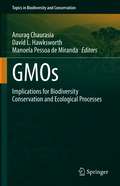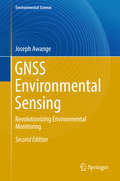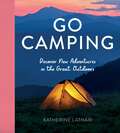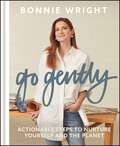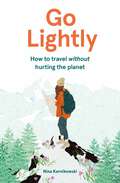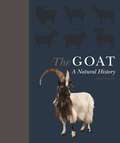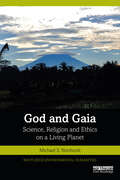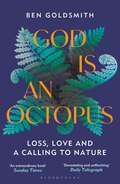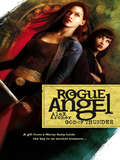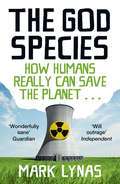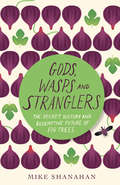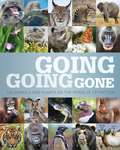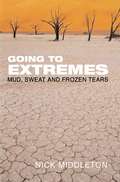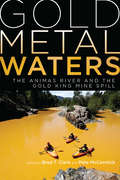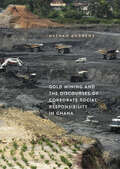- Table View
- List View
The Glorious Life of the Oak
by John Lewis-Stempel'The oak is the wooden tie between heaven and earth. It is the lynch pin of the British landscape.' The oak is our most beloved and most common tree. It has roots that stretch back to all the old European cultures but Britain has more ancient oaks than all the other European countries put together. More than half the ancient oaks in the world are in Britain. Many of our ancestors - the Angles, the Saxons, the Norse - came to the British Isles in longships made of oak. For centuries the oak touched every part of a Briton's life - from cradle to coffin It was oak that made the 'wooden walls' of Nelson's navy, and the navy that allowed Britain to rule the world. Even in the digital Apple age, the real oak has resonance - the word speaks of fortitude, antiquity, pastoralism.The Glorious Life of the Oak explores our long relationship with this iconic tree; it considers the life-cycle of the oak, the flora and fauna that depend on the oak, the oak as medicine, food and drink, where Britain's mightiest oaks can be found, and it tells of oak stories from folklore, myth and legend.
Glück und Nachhaltigkeit: Subjektives Wohlbefinden als Leitmotiv für nachhaltige Entwicklung (Edition Politik #97)
by Jochen DallmerWie lassen sich Glück und Nachhaltigkeit verbinden? Um die gegenwärtige ressourcenintensive Lebensweise zu überwinden, braucht es neue Leitbilder von subjektivem Wohlbefinden, die das gute Leben jenseits von Produktion und Konsum verorten. Die bisherige Debatte um Suffizienz und Postwachstum ist dabei vor allem von asketischen Idealen geprägt, welche für die Mehrzahl der Menschen nicht attraktiv erscheinen. Als eine vielversprechende Variante entwickelt Jochen Dallmer das Modell eines aufgeklärten Hedonismus, welcher das Streben nach subjektivem Wohlbefinden zu einem Beitrag für Nachhaltigkeit werden lässt.
Glück und Nachhaltigkeit: Subjektives Wohlbefinden als Leitmotiv für nachhaltige Entwicklung (Edition Politik #97)
by Jochen DallmerWie lassen sich Glück und Nachhaltigkeit verbinden? Um die gegenwärtige ressourcenintensive Lebensweise zu überwinden, braucht es neue Leitbilder von subjektivem Wohlbefinden, die das gute Leben jenseits von Produktion und Konsum verorten. Die bisherige Debatte um Suffizienz und Postwachstum ist dabei vor allem von asketischen Idealen geprägt, welche für die Mehrzahl der Menschen nicht attraktiv erscheinen. Als eine vielversprechende Variante entwickelt Jochen Dallmer das Modell eines aufgeklärten Hedonismus, welcher das Streben nach subjektivem Wohlbefinden zu einem Beitrag für Nachhaltigkeit werden lässt.
GMOs: Implications for Biodiversity Conservation and Ecological Processes (Topics in Biodiversity and Conservation #19)
by David L. Hawksworth Anurag Chaurasia Manoela Pessoa de MirandaThis book covers a broad spectrum of topics related to GMOs and allied new gene-based technologies, biodiversity, and ecosystem processes, bringing together the contributions of researchers and regulators from around the world. The aim is to offer a clear view of the benefits and effects of genetically modified crops, insects, and other animals on the soil microbiome and ecological processes. Contributors examine issues related to the development of risk assessment procedures and regulations designed to maximize benefits while minimizing risks. Beyond the scientific challenges of GMOs, the book explores the broad and contentious terrain of ethical considerations. The contributors discuss such questions as the unintended, possibly unforeseen, consequences of releasing GMOs into ecosystems, and the likelihood that the full effects of GMOs could take years, even decades, of close monitoring to become evident. The importance of developing a precautionary approach is stressed. The final chapter describes the critical issues of governance and regulation of new and emerging gene-based technologies, as nations grapple with the consequences of adopting the Cartagena Protocol on Biosafety (CPB). The volume includes an extensive Annex which outlines legal perspectives on the state of GMO governance around the world, with more than 20 examples from nations in Africa, South and Central America, Asia, Australasia, and Europe.
GNSS Environmental Sensing: Revolutionizing Environmental Monitoring (Environmental Science and Engineering)
by Joseph AwangeThis book is the second edition of Environmental Monitoring using GNSS and highlights the latest developments in global navigation satellite systems (GNSS). It features a completely new title and additional chapters that present emerging challenges to environmental monitoring—“climate variability/change and food insecurity.” Since the publication of the first edition, much has changed in both the development and applications of GNSS, a satellite microwave remote sensing technique. It is the first tool to span all four dimensions of relevance to humans (position, navigation, timing and the environment), and it has widely been used for positioning (both by military and civilians), navigation and timing. Its increasing use is leading to a new era of remote sensing that is now revolutionizing the art of monitoring our environment in ways never imagined before.On the one hand, nearly all GNSS satellites (Global Positioning System (GPS), Global Navigation Satellite System (GLONASS), Galileo and Beidou) have become operational, thereby providing high-precision, continuous, all-weather and near real- time remote sensing multi-signals beneficial to environmental monitoring. On the other hand, the emerging challenges of precisely monitoring climate change and the demand for the production of sufficient food for ever-increasing populations are pushing traditional monitoring methods to their limits.In this regard, refracted GNSS signals (i.e., occulted GNSS signals or GNSS meteorology) are now emerging as sensors of climate variability, while the reflected signals (GNSS reflectometry or GNSS-R) are increasingly finding applications in determining, e.g., soil moisture content, ice and snow thickness, ocean heights, and wind speed and direction, among others. Furthermore, the increasing recognition and application of GNSS-supported unmanned aircraft vehicles (UAV)/drones in agriculture (e.g., through the determination of water holding capacity of soil) highlights the new challenges facing GNSS.As such, this new edition three new chapters address GNSS reflectometry and applications; GNSS sensing of climate variability; and the applications in UAV/drones. Moreover, it explores the application of GNSS to support integrated coastal zone management.
Go Camping: Discover New Adventures in the Great Outdoors, Featuring Recipes, Activities, Travel Inspiration, Tent Hacks, Bushcraft Basics, Foraging Tips and More!
by Katherine LathamSay yes to new adventures! This beautiful book is brimming with tips, recipes, activities and more to help you plan your perfect trip and discover the joys of camping in the great outdoors.Camping is one of life’s purest pleasures. It’s a way to escape the frantic pace of the everyday, to get back to nature and to discover new experiences – and nothing comes close to the joy of sleeping under the stars.Packed with ideas for first-time campers and seasoned experts alike, this book is sure to inspire your next trip and help you create memories to last a lifetime. Within these pages you will find:Handy camping hacksDelicious recipesForaging tipsBushcraft basicsWild camping adviceInspiration for your travel bucket-list… And much more! Whether you’re seeking a relaxing natural getaway or an intrepid wilderness adventure, the great outdoors is waiting for you. So, pack your bag, pick up your tent and go camping!
Go Gently: Actionable Steps to Nurture Yourself and the Planet
by Bonnie WrightAn inspiring and approachable tip-filled guide to changing your habits, living more sustainably, and taking action, by Greenpeace ambassador Bonnie Wright (Ginny Weasley in the Harry Potter movies)Go Gently is a practical guide for sustainability at home that offers simple, tangible steps towards reducing our environmental impact by looking at what we consume and the waste we create, as well as how to take action for environmental change. The title reflects Bonnie's belief that the best way to change our planet and ourselves is through a gentle approach, rather than a judgmental one. This is a book of do's rather than don'ts. Going through every room in her home, Bonnie helps us assess which products are sustainable, and offers alternatives for those that are not. She shares recipes to avoid food waste, homemade self-care products to avoid packaging, small space friendly gardening ideas and a template for creating your own compost system. Finally, there are exercises and meditation prompts to keep you energised, as well as tips on how to get involved in wider community activism.
Go Lightly: How to travel without hurting the planet
by Nina KarnikowskiThis sustainable travel handbook inspires readers to explore our fascinating planet without causing it further harm. Ten chapters help you go lightly, including how to choose the least impactful methods of travel, how best to protect wildlife, how to pack with more consideration and how to implement mindful practices into each travel day, Go Lightly gives the reader a tool kit of fresh ideas for travelling more consciously. The book also covers eco-friendly activities including biking, boating and camping, and introduces us to some of the world's most inspiring eco-adventure pioneers.
The Goat: A Natural and Cultural History
by Sue WeaverA richly illustrated introduction to the goat—from livestock to beloved petIt may come as no surprise that goats are highly intelligent. They are also curious, gentle, independent, social, and full of character. Among the first domesticated animals, goats are increasingly appreciated today as pets and for their adaptability to a wide variety of environmental conditions. The Goat is a comprehensive, illustrated exploration of the natural and cultural history of this important animal. With engaging text, infographics, and diagrams, and some 250 beautiful color photographs, the book offers a wealth of information and insights about the goat’s distinctive biology and place in human culture, from ancient times to today. Chapters on Domestication, Anatomy & Biology, Society & Behavior, Goat Management, and Goats & People are followed by a visually stunning photographic directory to forty-eight popular breeds, with information about each. The Goat will enchant anyone with an interest in, or a love for, these animals.Provides a comprehensive, illustrated introduction to the natural and cultural history of the goatFeatures clear and engaging text plus infographics, diagrams, and some 250 stunning color photographsIncludes chapters on Domestication, Anatomy & Biology, Society & Behavior, Goat Management, and Goats & People, as well as a photographic directory to forty-eight popular breeds
God and Gaia: Science, Religion and Ethics on a Living Planet (Routledge Environmental Humanities)
by Michael S NorthcottGod and Gaia explores the overlap between traditional religious cosmologies and the scientific Gaia theory of James Lovelock. It argues that a Gaian approach to the ecological crisis involves rebalancing human and more-than-human influences on Earth by reviving the ecological agency of local and indigenous human communities, and of nonhuman beings. Present-day human ecological influences on Earth have been growing at pace since the Scientific and Industrial Revolutions, when modern humans adopted a machine cosmology in which humans are the sole intelligent agency. The resultant imbalance between human and Earthly agencies is degrading the species diversity of ecosystems, causing local climate changes, and threatens to destabilise the Earth as a System. Across eight chapters this ambitious text engages with traditional cosmologies from the Indian Vedas and classical Greece to Medieval Christianity, with case material from Southeast Asia, Southern Africa and Great Britain. It discusses concepts such as deep time and ancestral time, the ethics of genetic engineering of foods and viruses, and holistic ecological management. Northcott argues that an ontological turn that honours the differential agency of indigenous humans and other kind, and that draws on sacred traditions, will make it is possible to repair the destabilising impacts of contemporary human activities on the Earth System and its constituent ecosystems. This book will be of considerable interest to students and scholars of the environmental humanities, history, and cultural and religious studies.
God and Gaia: Science, Religion and Ethics on a Living Planet (Routledge Environmental Humanities)
by Michael S NorthcottGod and Gaia explores the overlap between traditional religious cosmologies and the scientific Gaia theory of James Lovelock. It argues that a Gaian approach to the ecological crisis involves rebalancing human and more-than-human influences on Earth by reviving the ecological agency of local and indigenous human communities, and of nonhuman beings. Present-day human ecological influences on Earth have been growing at pace since the Scientific and Industrial Revolutions, when modern humans adopted a machine cosmology in which humans are the sole intelligent agency. The resultant imbalance between human and Earthly agencies is degrading the species diversity of ecosystems, causing local climate changes, and threatens to destabilise the Earth as a System. Across eight chapters this ambitious text engages with traditional cosmologies from the Indian Vedas and classical Greece to Medieval Christianity, with case material from Southeast Asia, Southern Africa and Great Britain. It discusses concepts such as deep time and ancestral time, the ethics of genetic engineering of foods and viruses, and holistic ecological management. Northcott argues that an ontological turn that honours the differential agency of indigenous humans and other kind, and that draws on sacred traditions, will make it is possible to repair the destabilising impacts of contemporary human activities on the Earth System and its constituent ecosystems. This book will be of considerable interest to students and scholars of the environmental humanities, history, and cultural and religious studies.
God Is An Octopus: Loss, Love and a Calling to Nature
by Ben Goldsmith'Intensely readable, poetic, truthful, wise and wonderful.' STEPHEN FRY'A message of beauty and optimism.' JOANNA LUMLEY'Stunningly beautiful, immensely sad, immensely uplifting.' GEORGE MONBIOT'Extraordinarily powerful and moving... a book of universal wisdom.' BENEDICT CUMBERBATCH'Beautiful and deeply moving.' ISABELLA TREE'An extraordinary book.' SUNDAY TIMES'Unfathomable tragedy chronicled with profound love and compassion.' RICHARD E. GRANT'Emotive, raw and captivating.' BENEDICT MACDONALD-Struggling to comprehend the shocking death of his teenage daughter, Ben Goldsmith finds solace in nature by immersing himself in plans to rewild his farm.In July 2019, Ben Goldsmith lost his fifteen-year-old daughter, Iris, in an accident on their family farm in Somerset. Iris's death left her family reeling. Grasping for answers, Ben threw himself into searching for some ongoing trace of his beloved child, exploring ideas that until then had seemed too abstract to mean much to him. Missing his daughter terribly and struggling to imagine how he would face the rest of his life in the shadow of this loss, Ben found solace in nature, the object of a lifelong fascination. As Ben set about rewilding his farm, nature became a vital source of meaning and hope. This book is the story of a year of soul-searching that followed a terrible loss. In an instant, Ben's world had turned dark. Yet, unbelievably to him, the seasons kept on turning, and as he immersed himself in the dramatic restoration of nature in the place where it happened, he found healing. In God is an Octopus, Ben tells a powerful, immersive and inspiring story of finding comfort and strength in nature after suffering loss and despair.
God Of Thunder
by Alex ArcherArchaeologist Annja Creed narrowly escapes an attack by unknown figures when she tries to collect a package near her loft. She later learns that the sender–an old colleague named Fellini–has been brutally murdered.
The God Species: How The Planet Can Survive The Age Of Human
by Mark LynasOriginally published as The God Species: How the Planet Can Survive the Age of Humans The green movement has got it very wrong.
Gods, Wasps and Stranglers: The Secret History and Redemptive Future of Fig Trees
by Mike ShanahanOver millions of years, fig trees have shaped our world, influenced our evolution, nourished our bodies and fed our imaginations. And as author and ecologist Mike Shanahan proclaims, “The best could be yet to come.” Gods, Wasps and Stranglers weaves together the mythology, history and ecology of one of the world’s most fascinating—and diverse—groups of plants, from their starring role in every major religion to their potential to restore rainforests, halt the loss of rare and endangered species and even limit climate change. In this lively and joyous book, Shanahan recounts the epic journeys of tiny fig wasps, whose eighty-million-year-old relationship with fig trees has helped them sustain more species of birds and mammals than any other trees; the curious habits of fig-dependent rhinoceros hornbills; figs’ connection to Krishna and Buddha, Jesus and Muhammad; and even their importance to Kenya’s struggle for independence. Ultimately, Gods, Wasps and Stranglers is a story about humanity’s relationship with nature, one that is as relevant to our future as it is to our past.
Going, Going, Gone: 100 animals and plants on the verge of extinction (Cloverleaf Books (tm) -- Planet Protectors Ser.)
by Bloomsbury PublishingWe asked 100 conservation groups around the world: 'if you could pick one species that epitomises your work, which would it be?' From the RSPB to WWF to the Cheetah Conservation Fund, and many, many more, the answers came rolling in. Each provided a synopsis of the threats faced by their selected species, a summary of their degree of threat, an outline of the work being done to save them, and a number of ways in which the reader could help to conserve that species.With beautiful full-page photographs of each of the 100 species, this is a book that will both fascinate and educate and, hopefully, help to secure the future of the threatened animals and plants that it showcases.
Going to Extremes
by Nick MiddletonIn Going to Extremes writer, presenter and Oxford geography don Nick Middleton visits Oymyakon in Siberia, where the average winter temperature is -47 degrees and 40% of the population have lost their fingers to frostbite while changing the car wheel. Next he travels to Arica Chile where there have been fourteen consecutive years without a drop of rain and so fog is people's only source of water. Going from the driest to the wettest, he visits Mawsynram in India which annually competes for the title with its neighbour Cherrapunji. However, Nick discovers even here, that during the dry season, there is water shortage and one entrepreneur has started selling it bottled.Finally his journey takes him to Dalol in Ethiopia known as the 'hell hole of creation' where the temperature remains at 94 degrees year round. Here Nick will join miners who work all day with no shade, limited water and no protective clothing.The book and series consider how and why people lives in these harsh environments. How does Nick's body react to these contrasting extremes? He looks at the geographical and meteorological conditions. He meets local characters and discovers the history of these settlements to find out how they ever became populated. He looks at the way both the population, and the flora and fauna, have adapted physically to the climate, and also considers the psychological impact of living under such conditions.
Going Zero: One Family's Journey to Zero Waste and a Greener Lifestyle
by Kate HughesWhen a ripped beanbag sent thousands of tiny polystyrene balls flying through her garden, Kate Hughes made a decisive break with the throwaway society. The English journalist greened every aspect of her family’s life. She and her husband ditched plastic and shunned supermarkets. They cooked all meals from scratch and made their own cleaning agents. They bought second-hand clothes and washed them naturally. Reaching deeper, they switched to renewable power, pulled their savings out of dirty banks, and ran an electric car. They and their two children are now going beyond the ‘zero waste’ goal of avoiding sending anything to landfill. Told with refreshing humility and humour, this is the inspiring story of an ordinary family who rebelled against the waste of a lifestyle wrapped in plastic. Packed with handy tips, it reveals much about what makes a fulfilling modern family – and how readers can empower themselves to preserve the climate, forests and seas. And, revealingly, how that can lead to a more relaxing life.
Gold Metal Waters: The Animas River and the Gold King Mine Spill
by Brad T. Clark Pete McCormickGold Metal Waters presents a uniquely inter- and transdisciplinary examination into the August 2015 Gold King Mine spill in Silverton, Colorado, when more than three million gallons of subterranean mine water, carrying 880,000 pounds of heavy metals, spilled into a tributary of the Animas River. The book illuminates the ongoing ecological, economic, political, social, and cultural significance of a regional event with far-reaching implications, showing how this natural and technical disaster has affected and continues to affect local and national communities, including Native American reservations, as well as agriculture and wildlife in the region. This singular event is surveyed and interpreted from multiple diverse perspectives—college professors, students, and scientists and activists from a range of academic and epistemological backgrounds—with each chapter reflecting unique professional and personal experiences. Contributors examine both the context for this event and responses to it, embedding this discussion within the broader context of the tens of thousands of mines leaking pollutants into waterways and soils throughout Colorado and the failure to adequately mitigate the larger ongoing crisis. The Gold King Mine spill was the catalyst that finally brought Superfund listing to the Silverton area; it was a truly sensational event in many respects. Gold Metal Waters will be of interest to students and scholars in all disciplines, but especially in environmental history, western history, mining history, politics, and communication, as well as general readers concerned with human relationships with the environment. Contributors: Alane Brown, Brian L. Burke, Karletta Chief, Steven Chischilly, Becky Clausen, Michael A. Dichio, Betty Carter Dorr, Cynthia Dott, Gary Gianniny, David Gonzales, Andrew Gulliford, Lisa Marie Jacobs, Ashley Merchant, Teresa Montoya, Scott W. Roberts, Lorraine L. Taylor, Jack Turner, Keith D. Winchester, Megan C. Wrona, Janene Yazzie
Gold Mining and the Discourses of Corporate Social Responsibility in Ghana
by Nathan AndrewsThis book critically examines the practice and meanings of corporate social responsibility (CSR) and how the movement has facilitated a positive and somewhat unquestioned image of the global corporation. Drawing on extensive fieldwork material collected in Ghanaian communities located around the project sites of Newmont Mining Corporation and Kinross Gold Corporation, the monograph employs critical discourse analysis to accentuate how mining corporations use CSR as a discursive alibi to gain legitimacy and dominance over the social order, while determining their own spheres of responsibility and accountability. Hiding behind such notions as ‘social licence to operate’ and ‘best practice,’ corporations are enacted as entities that are morally conscious and socially responsible. Yet, this enactment is contested in host communities, as explored in chapters that examine corporate citizenship, gendered perspectives, and how global CSR norms institutionalize unaccountability.
The Golden Century of Oil 1950–2050: The Depletion of a Resource (GeoJournal Library #19)
by C.J. Campbelloil is the lifeblood of the World's economy. It was a critical element in two World Wars and in the Cold War, and, as recent events in the Middle East confirm, people are willing to fight for it. The cheap energy it provides, especially for transport and agriculture, was one of the main factors that made possible the economic prosperity and growth that the World has enjoyed for the past fifty years and more. People rely on it everywhere, and in many forms, and they have become so accustomed to its ready availability that they take it for granted. To conceive of a world without traffic jams and airliners is unthinkable, and while not so obvious, oil lies behind every supermarket shelf, fuelling the tractor that ploughs the field and the delivery van that brings the consumer his food. Yet everyone knows that it is a finite and irreplaceable commodity, formed long ago in the geological past. What no one knows is just how finite it is. This book is an effort to try to answer that question : not in detail, but at least in orders of magnitude. More useful than the figures themselves is the discussion of the elements involved in addressing the subject. While it is impossible to predict the precise pattern of future production, which will be affected by many unforeseeable factors, one can at least begin to think in terms of resource constraint instead of an ever expanding supply of oil.
The Golden Mole: and Other Living Treasure
by Katherine RundellA gloriously illustrated and fascinating bestiary of the world's most extraordinary endangered animals - a treasure trove of vanishing wonders.'A rare and magical book. I didn't want it to end.' Bill Bryson 'Rundell is the real deal, a writer of boundless gifts and extraordinary imaginative power.' Observer'Rundell's pen is gold-tipped.' Sunday TimesThe world is more astonishing, more miraculous and more wonderful than our wildest imaginings.In this passionately persuasive and sharply funny book, Katherine Rundell tells us how and why.***A swift flies two million kilometres in its lifetime. That's far enough to get to the moon and back twice over - and then once more to the moon. A pangolin keeps its tongue furled in a pouch by its hip, a Greenland shark can live five hundred years, a wombat once inspired a love poem.
The Golden Mouse: Ecology and Conservation
by Gary W. Barrett George A. FeldhamerIf you’re thinking of Jason and the Argonauts, think again. In this book, the golden mouse is used as a model to explore conceptual issues in ecology across all levels of organization from organism to landscape, integrating reductionist and holistic ecological science. Through intensive study of a single species, the authors demonstrate biological and ecological information applicable to many fields, including conservation and resource management.
Golden-winged Warbler Ecology, Conservation, and Habitat Management (Studies in Avian Biology)
by Henry M. Streby, David E. Andersen and David A. BuehlerGolden-winged Warblers (Vermivora chrysoptera) are migratory songbirds that breed in temperate North America, primarily in the Great Lakes region with remnant populations throughout the Appalachian Mountains, and winter in Central and northern South America. Their breeding range has contracted dramatically in the Appalachian Mountains and many populations have dramatically declined, likely due to habitat loss, competition and interbreeding with Blue-winged Warblers (Vermivora pinus), andglobal climate change.. As a result of population declines in much of the eastern portion of their breeding range, Golden-winged Warblers are listed as endangered or threatened in 10 U.S. states and in Canada and have been petitioned for protection under the U.S. Endangered Species Act. Published in collaboration with and on behalf of The American Ornithological Society, this volume in the highly-regarded Studies in Avian Biology series compiles extensive, current research on Golden-winged Warblers and summarizes what is known and identifies many remaining unknowns, providing a wealth of peer-reviewed science on which future research and listing decisions can be based.
Golden-winged Warbler Ecology, Conservation, and Habitat Management (Studies in Avian Biology)
by Henry M. Streby David E. Andersen David BuehlerGolden-winged Warblers (Vermivora chrysoptera) are migratory songbirds that breed in temperate North America, primarily in the Great Lakes region with remnant populations throughout the Appalachian Mountains, and winter in Central and northern South America. Their breeding range has contracted dramatically in the Appalachian Mountains and many populations have dramatically declined, likely due to habitat loss, competition and interbreeding with Blue-winged Warblers (Vermivora pinus), andglobal climate change.. As a result of population declines in much of the eastern portion of their breeding range, Golden-winged Warblers are listed as endangered or threatened in 10 U.S. states and in Canada and have been petitioned for protection under the U.S. Endangered Species Act. Published in collaboration with and on behalf of The American Ornithological Society, this volume in the highly-regarded Studies in Avian Biology series compiles extensive, current research on Golden-winged Warblers and summarizes what is known and identifies many remaining unknowns, providing a wealth of peer-reviewed science on which future research and listing decisions can be based.



